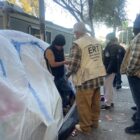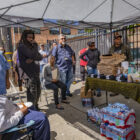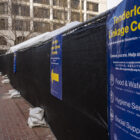Health
SF ‘Failing’ on Housing as Overdose Solution, Health Expert Says
Sarah Evans has spent decades advancing drug overdose prevention initiatives around the world. As a division director for Open Society Foundations — a grantmaking network founded and chaired by business magnate George Soros — Evans promotes one surefire way to help abate San Francisco’s homelessness and fatal overdose crisis: housing.
“The way that people get off the street is by getting into housing, where people can get support and stay there even while they are continuing to struggle with substance use disorders of all kinds and mental health issues,” said Evans, who leads the organization’s drug policy programs globally. “It literally is the only way.”
San Francisco isn’t doing enough to meet this housing need, according to health experts.













